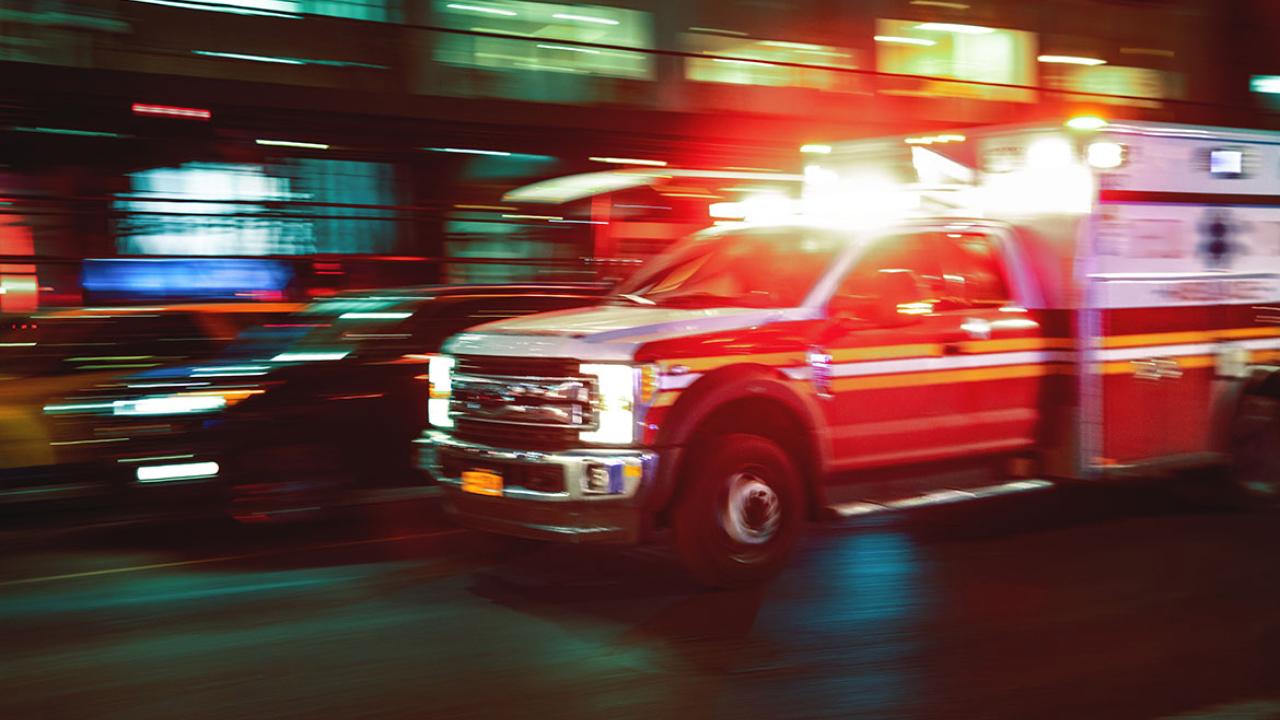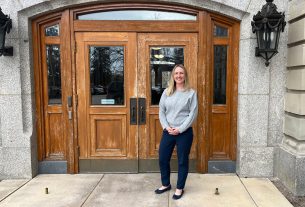[ad_1]
Young men living in the Chicago and Philadelphia ZIP codes with the most shooting deaths face greater firearm-related risk than did soldiers in the Iraq and Afghanistan war zones.
Researchers from Brown University and other Northeast institutions examined public data on all fatal and nonfatal shootings for men between 18 and 29 in 2020 and 2021 in Chicago, Los Angeles, New York and Philadelphia. These figures were compared with U.S. military data for wartime combat-related mortality and injury counts in Afghanistan between 2001 and 2014 and Iraq between 2003 and 2009.
“In 2020, homicides in the United States saw a record single-year increase, with firearm injuries becoming the leading cause of death for children, adolescents and young adults,” the authors wrote in a study published in JAMA Network Open. “It is critical to understand the magnitude of this crisis to formulate an effective response.”
They also noted that the health impacts that combat veterans face from the trauma associated with encountering the death and violence of war have been well documented, so “if domestic homicide mortality and injury risks are comparable, it may call for developing similar interventions.”
“Given that the risks of our study were also overwhelmingly shouldered by minoritized racial and ethnic groups, fully delivering on commitments to health equity requires addressing the violence that lies at the root of many behavioral health disparities, in addition to being a health disparity in its own right,” the study says.
The term “minoritized” refers to the process of historically relegating people to a subordinated status based on a dominant category intended to oppress groups based on a given social standing.
This study was cited by AMA member Megan Ranney, MD, MPH, the incoming dean for the Yale University School of Public Health, during a recent episode the AMA “Prioritizing Equity” video series in which panelists discussed the need for public health approaches to firearm violence.
Public health solutions sought
Public health solutions sought
AMA policy states that gun violence represents a public health crisis that requires a comprehensive public health response and solution.
“Death by firearms is the leading cause of death in children in the United States, and we know in public health that this is preventable and just really should not be,” said AMA Senior Vice President and Chief Health Equity Officer Aletha Maybank, MD, MPH, who moderated the panel.
The AMA has formed a gun violence prevention task force and also has adopted more than 30 policy recommendations to reduce firearm violence, trauma, injury and death.
Learn how the AMA advocates to prevent gun violence and to increase gun safety.
Dr. Ranney described a four-step public health framework for addressing firearm violence that includes:
- Defining the problem and collecting data.
- Looking at risk and preventive factors, which can involve using social-ecological models and root-cause analysis.
- Developing and testing prevention strategies. This can range from individual interventions to hospital-based community programs, to cultural, environmental and societal change brought on through policy, legislation, investment or education.
- Putting in place evidence-based solutions.
“That’s where we—straddling medicine and public health—have the capacity to both raise awareness to those very real health effects of firearm injury,” Dr. Ranney said. “This is not simply a criminological or political or policy problem. It is something that affects people’s physical and emotional health, their sense of safety, their sense of well-being.”
Regarding education, AMA policy adopted last year supports “the inclusion of firearm-related violence and suicide epidemiology, as well as evidence-based firearm-related injury prevention education in undergraduate and graduate medical education training programs, where appropriate.”
Physicians not immune to violence
Physicians not immune to violence
For panelist Brian Williams, MD, a trauma and acute care surgeon in Dallas, the episode’s topic was painfully personal. He had a cousin who was recently shot and killed, and as the episode recorded, he was preparing to attend the funeral.
“The timeliness of it brought me back to this discussion today to talk about the human toll that happens every day that is not making the news, but also that we as health care providers are also humans and this impacts us beyond just a professional endeavor,” Dr. Williams said.
Physicians and health professionals themselves have not been spared.
Panelist Joseph Sakran, MD, a Johns Hopkins Hospital trauma surgeon, was only 17 and attending a high school football game when a bullet hit him in the throat, rupturing his trachea and injuring his vocal cord and carotid artery.
Last year, Stephanie Husen, DO, and Preston Philips, MD, were shot and killed at their offices in Tulsa, Oklahoma, and John Cheng, MD, was killed while attending church in Orange County, California.
Just last month, five women were shot as they sat in the waiting room of a medical office building on the campus of Atlanta’s Northside Hospital Midtown. Amy St. Pierre, a mother of two children, was killed in the attack. A public health analyst for the Centers for Disease Control and Prevention, St. Pierre is credited with helping to build the CDC’s Maternal Mortality Prevention Team.
AMA President-elect Jesse Ehrenfeld, MD, MPH, wrote in a recent Washington Post op-ed column that one of the victims in the March 27 mass shooting at a Nashville school was the son of a colleague.
In the column he recounted his experience of telling a parent her son had died from his gunshot wounds.
“One cry haunts me,” Dr. Ehrenfeld wrote. “One night at a Chicago hospital, I was part of a team that tried to save the life of a young man shot with an assault rifle. I told his mother that we could not save his life. Wracked by grief, the woman’s only response was a piercing scream. I had no words.”
Look for upstream solutions
Look for upstream solutions
Dr. Ranney noted the importance of the public health strategy of trying to address concerns as far as upstream as possible.
It’s “about changing all of those steps that puts someone in harm’s way up until that final moment of being ready to pull the trigger,” she said.
Learn more with the AMA Ed Hub™ course, “The Physician’s Role in Promoting Firearm Safety.”
[ad_2]
Source link


